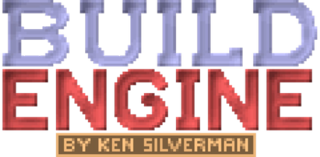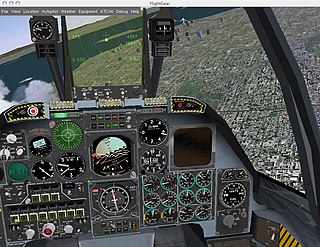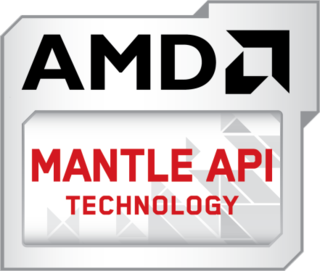
id Software LLC is an American video game developer based in Richardson, Texas. It was founded on February 1, 1991, by four members of the computer company Softdisk: programmers John Carmack and John Romero, game designer Tom Hall, and artist Adrian Carmack.

Crytek GmbH is a German video game developer and software developer based in Frankfurt. Founded by the Yerli brothers in Coburg in 1999 and moved to Frankfurt in 2006, Crytek operates additional studios in Kyiv, Ukraine and Istanbul, Turkey. Its former studios included Crytek Black Sea in Sofia, Bulgaria, Crytek UK in Nottingham, and Crytek USA in Austin, Texas. Crytek is best known for developing the first instalment of the Far Cry series, the Crysis series, and the open world nature of their games which showcase the company's CryEngine.

The Build Engine is a first-person shooter engine created by Ken Silverman, author of Ken's Labyrinth, for 3D Realms. Like the Doom engine, the Build Engine represents its world on a two-dimensional grid using closed 2D shapes called sectors, and uses simple flat objects called sprites to populate the world geometry with objects.
Source is a 3D game engine developed by Valve. It debuted as the successor to GoldSrc in 2004 with the releases of Half-Life: Source, Counter-Strike: Source, and Half-Life 2. It is most well-known for its usage by Valve, but the engine has been used both by small teams and individuals to create modifications of Valve games, and other studios creating distinct games, notably Troika Games' title Vampire: The Masquerade – Bloodlines. Valve continued to create incremental updates to the Source engine after its 2004 release, most of which coincided with games created by Valve. In the late 2010s, Valve created the Source 2 engine to replace Source, with it publicly debuting alongside Half-Life: Alyx. The Source engine is most well-known for its advancements in physics, AI, and graphics.

Nexuiz is a free first-person shooter video game developed and published by Alientrap. The game was released under the GNU General Public License (GPL) and uses the DarkPlaces engine, a modified Quake engine. A remake, also called Nexuiz, was released for Steam and Xbox 360 using CryEngine 3. The original game was released on May 31, 2005.

Torque Game Engine, or TGE, is an open-source cross-platform 3D computer game engine, developed by GarageGames and actively maintained under the current versions Torque 3D as well as Torque 2D. It was originally developed by Dynamix for the 2001 first-person shooter Tribes 2. In September 2012, GarageGames released Torque 3D as open-source software under the MIT License.

CryEngine is a game engine designed by the German game developer Crytek. It has been used in all of their titles with the initial version being used in Far Cry, and continues to be updated to support new consoles and hardware for their games. It has also been used for many third-party games under Crytek's licensing scheme, including Sniper: Ghost Warrior 2 and SNOW. Warhorse Studios uses a modified version of the engine for their medieval RPG Kingdom Come: Deliverance. Ubisoft maintains an in-house, heavily modified version of CryEngine from the original Far Cry called the Dunia Engine, which is used in their later iterations of the Far Cry series.

Creative Assembly Sofia is a Bulgarian video game developer based in Sofia. It was founded in May 2001 by Vesselin Handjiev. In July 2008, the company was acquired by Crytek, which then sold it to Creative Assembly in March 2017.

An open-source video game, or simply an open-source game, is a video game whose source code is open-source. They are often freely distributable and sometimes cross-platform compatible.
Linux-based operating systems can be used for playing video games. Because many games are not natively supported for the Linux kernel, various software has been made to run Windows games, such as Wine, Cedega, and Proton, and managers such as Lutris and PlayOnLinux. The Linux gaming community has a presence on the internet with users who attempt to run games that are not officially supported on Linux.

Ryan C. Gordon is a computer programmer and former Loki Software employee responsible for icculus.org, which hosts many Loki Software projects as well as others. Gordon's site hosts projects with the code from such commercial games as Duke Nukem 3D, Shadow Warrior, Quake III Arena and other free and open source projects for multiple platforms.

Blue Mars, a 3D massively multiplayer virtual world platform developed by Hawaii-based Avatar Reality, allows 3rd parties to create virtual worlds, MMOG games, simulations, shops, businesses, entertainment venues, clothing, custom avatars, furniture, virtual homes, and other items. It consists of four main parts: the client software, the Sandbox Editor SDK suite, the website, and the host servers. It is often compared to Second Life, since both are virtual social worlds allowing user-created content. According to Jim Sink, CEO of Avatar Reality, "Blue Mars was inspired by a vision of the future when the power to terraform whole worlds is within our grasp. The name Blue Mars represents possibility and hope."
Warface: Clutch is a free-to-play online first-person shooter video game developed by Crytek Kiev, co-produced by Crytek Seoul, and published by My.com. The full version of the game was released on 21 October 2013 as playable in North America and Europe. The game was developed with Crytek's in-house CryEngine 3. Warface: Clutch centers around online firefights in player versus player (PvP) matches, with microtransactions allowing players to purchase weapons, equipment, and cosmetic gear. The Xbox 360 port, which was developed by Crytek UK, was discontinued in February 2015. The console version of the game was relaunched for the PlayStation 4 and Xbox One in 2018 and on the Nintendo Switch in 2020. Members of the game's development team split from Crytek Kiev in February 2019 to form a new development studio, Blackwood Games, who will handle future development duties for Warface: Clutch. A tactical shooter spin-off game named Warface: Breakout was released on 26 May 2020 for the PlayStation 4 and Xbox One.

Star Citizen is an in-development multiplayer, space trading and combat simulation game. The game is being developed and published by Cloud Imperium Games for Windows. An extended retry of unrealized plans for Freelancer, Star Citizen is led by director Chris Roberts. The game was announced via a private crowdfunding page in September 2012, followed on October 18, 2012 by a successful Kickstarter campaign which drew over US$2 million. Pre-production of the game began in 2010, with production starting in 2011.

Mantle was a low-overhead rendering API targeted at 3D video games. AMD originally developed Mantle in cooperation with DICE, starting in 2013. Mantle was designed as an alternative to Direct3D and OpenGL, primarily for use on personal computers, although Mantle supports the GPUs present in the PlayStation 4 and in the Xbox One. In 2015, Mantle's public development was suspended and in 2019 completely discontinued, as DirectX 12 and the Mantle-derived Vulkan rose in popularity.

Godot is a cross-platform, free and open-source game engine released under the permissive MIT license. It was initially developed in Buenos Aires by Argentine software developers Juan Linietsky and Ariel Manzur for several companies in Latin America prior to its public release in 2014. The development environment runs on many platforms, and can export to several more. It is designed to create both 2D and 3D games targeting PC, mobile, and web platforms and can also be used to develop non-game software, including editors.

TrueAudio is AMD's application-specific integrated circuit (ASIC) intended to serve as dedicated co-processor for the calculations of computationally expensive advanced audio signal processing, such as convolution reverberation effects and 3D audio effects. TrueAudio is integrated into some of the AMD GPUs and APUs available since 2013.
Stride is a free and open-source 2D and 3D cross-platform game engine originally developed by Silicon Studio. It can be used to create video games for PC, mobile devices and virtual reality.

Amazon Games is an American video game company and division of the online retailing company Amazon that primarily focuses on publishing video games developed within the company's development divisions.

Open 3D Engine is a free and open-source 3D game engine developed by Open 3D Foundation, a subsidiary of the Linux Foundation, and distributed under the Apache 2.0 open source license. The initial version of the engine is an updated version of Amazon Lumberyard, contributed by Amazon Games.
















